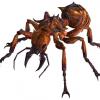There isn't any smell that I noticed. Remember you're only using a little at a time and the leftover food just dries up like dspdrew mentioned. The hummingbird mix contains a preservative and that's why its used. Also, the modified food starch and honey contain preservative properties.
Not all hummingbird mixes contain preservatives. Ones that do, are likely to contain sugar, color dye, a preservative agent, and an acid. This one, for example, is lacking the preservative agent. As with soft drinks, the likely preservative agent, sodium benzoate, if present, works best in an acidic environment against certain classes of microorganisms, while being less effective against others.
While such a tradeoff may be acceptable in a solution just containing sugar water, when using preservative agents for high-moisture foods rich in proteins, fats, and a wealth of micronutrients, broad spectrum preservatives are required.
Further, the efficacy of the preservative agent is determined by its concentration in a solution. Without knowing the concentration, it is impossible to determine if the supposed ingredient is effectively doing anything more than making you feel good about having used it.
Modified food starch and honey do not have any preservative properties in solution.
The most common types of modified food starch are made from corn, wheat, potato, and tapioca. The special manufacturing process that "modifies" the starches only affects their physical working properties, such as allowing them to thicken liquids differently. There is absolutely no evidence that modified starches act as a preservative, in the same way as there is no evidence that wheat flour and water act as a preservative.
Honey is a well-known antiseptic on account of the fact that is is mostly sugar (fructose) with a small concentration of water, which allows it to act as a liquid. It is not the fructose or the honey that is antiseptic, but the low water concentration. When more water is added, as anyone who has fed ants with a solution of honey and water can tell you, it quickly becomes a breeding ground for slimy water molds. As a natural product, honey is a safe harbor for many types of mold spores, some of which can even prove deadly to infants and young children.
-
While your thinking on why the food doesn't smell is in the ballpark of reality, it's far from a home run. In fact, as Drew mentioned, the reason why there is likely to be little smell associated with your "food" is because the food, when allowed to dry, will have a high sugar content and a low moisture content, which, as discussed, is an effective preservative combination.
Problems will arise when the food is broken into granules and stored, sometimes in moist portions of the nest. Within a few hours or a few days, depending on temperature and humidity, the user will inevitably have rotten chicken in their formicarium, which absolutely does smell.
-
Again, the smell issue is a diversion from my chief concerns, which are the continued perpetuation and peddling of the ideas that
a) there is a static, invariable relationship between receptivity and biological efficacy or healthfulness;
b) "hummingbird nectar" is substantially different from and superior to granulated table sugar; and
c) adding ingredients volumetrically, including blends of "vitamin powders," is a reasonable method by which to design a synthetic diet for long-term use in antkeeping.
As someone who has studied and read hundreds of journals on the subjects of receptivity, generally as applied to the pest and baiting industries, diet efficacy and healthfulness, generally as applied to standardized diets designed for laboratory use, and the concepts of colony-level macronutrient regulation, species-dependent nutritional upgrading, and other high-level concepts, I cannot stress enough how important it is that research in hobby diets be conducted pragmatically and decisively.
I understand that your intention may have been to inform the public of a relatively simple solution you discovered to feeding ants a homemade synthetic diet that "works" for you. Nevertheless, at present, the direction of this thread makes a mockery of drastically oversimplifies the hard science that goes into ant nutrition the development of synthetic ant diets. But it doesn't have to be that way:
- Educate yourself by perusing the multitudes of journals by scientists worldwide on the aforementioned subjects, paying specific attention to the methods used by which to prepare the diets as well as those used to measure the outcomes.
- Start by obtaining as many individual ingredients, rather than pre-blended ingredients, to make your test diets. For example, rather than buying mystery hummingbird powder, make your own with sucrose, sodium benzoate, ascorbic acid, and whatever food dye you like. It is critically important to maintain 100% control over your ingredients and measurements, and to use a gram scale to measure everything out.
- Meticulously record your diets and observations over a period of weeks. Numbers are generally more useful than adjectives.
- Share your findings with the community, and prosper.
On a related note, and in closing, Etherwulf should be commended on his detailed and uncompromising approach to formulating his diets—even if he did have a pretty good starting point from which to base them ;~) If I had one criticism, it would be that he needs a dedicated research thread to detail his methods and observations.
Edited by drtrmiller, February 12 2015 - 8:02 AM.
![]() All my ants love it and accept it readily. I have Pogonomyrmex, Camponotus, Crematogaster, Solenopsis to name a few. I especially like the paste, it is great for test tube feeding, measuring out tiny amounts, and you don't have to worry about your ants getting stuck and drowning.
All my ants love it and accept it readily. I have Pogonomyrmex, Camponotus, Crematogaster, Solenopsis to name a few. I especially like the paste, it is great for test tube feeding, measuring out tiny amounts, and you don't have to worry about your ants getting stuck and drowning.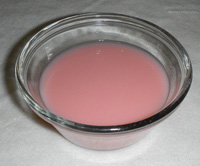
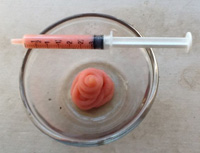
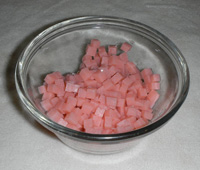

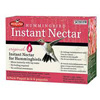


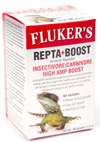
![]()


